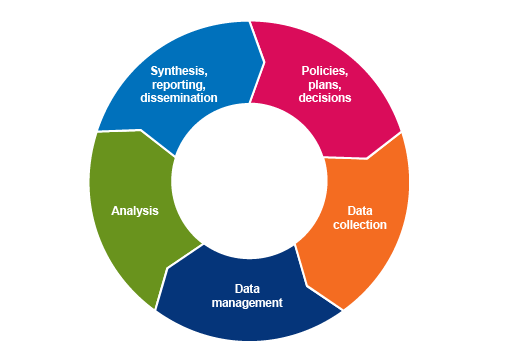1 Recap: data analysis principles
In the module Fundamentals of data for AMR, you learned about the basics of data for AMR, antimicrobial use (AMU) and antimicrobial consumption (AMC). The table below reminds you of the definitions of core terms that you will need for this module.
| Term | Definition |
|---|---|
| Data | Data are any observations or sets of observations or measurements that represent attributes about an entity, also referred to as a |
| Variable | A variable is an attribute used to characterise a data unit. They are called variables because their values can vary from one data unit to another and may change over time. Here are examples of commonly used variables:
Variables can be classified into numeric (quantitative) and categorical (qualitative) variables. Numeric variables can be further defined as either continuous or discrete, and categorical variables as either nominal or ordinal. |
| Dataset | A dataset is a collection of separate pieces of data that is treated as a single unit by a computer. Datasets often represent data in the form of a data table, in which columns represent variables and rows represent data values corresponding to each data unit. |
| Indicator | An indicator is a variable that has attributes directly relevant to decision-making. It is useful to determine whether, for example, the objectives of a program have been achieved, or a threshold for action has been reached. Most indicator variables are not directly observed and have to be calculated from the values of other variables. Given their importance in supporting decision making, indicator variables should have SMART characteristics (Specific, Measurable, Achievable, Attributable, Relevant, Realistic and Time-bound). |
In the module Fundamentals of data for AMR, you were introduced to the ‘information cycle’ (Figure 1). It refers to the cyclical process of turning data into relevant, usable information that supports evidence-based decision making. In the Sampling modules, you learned about sources of AMR data and how representative samples of the population can be designed. In this module, you will learn about principles of best practice for collecting and managing AMR-related data, and how it can be analysed and interpreted. Other modules cover other aspects of the information cycle, for example, the modules Communicating AMR data and Using AMR data for policy making address the reporting, dissemination and use of AMR data.
Introduction




